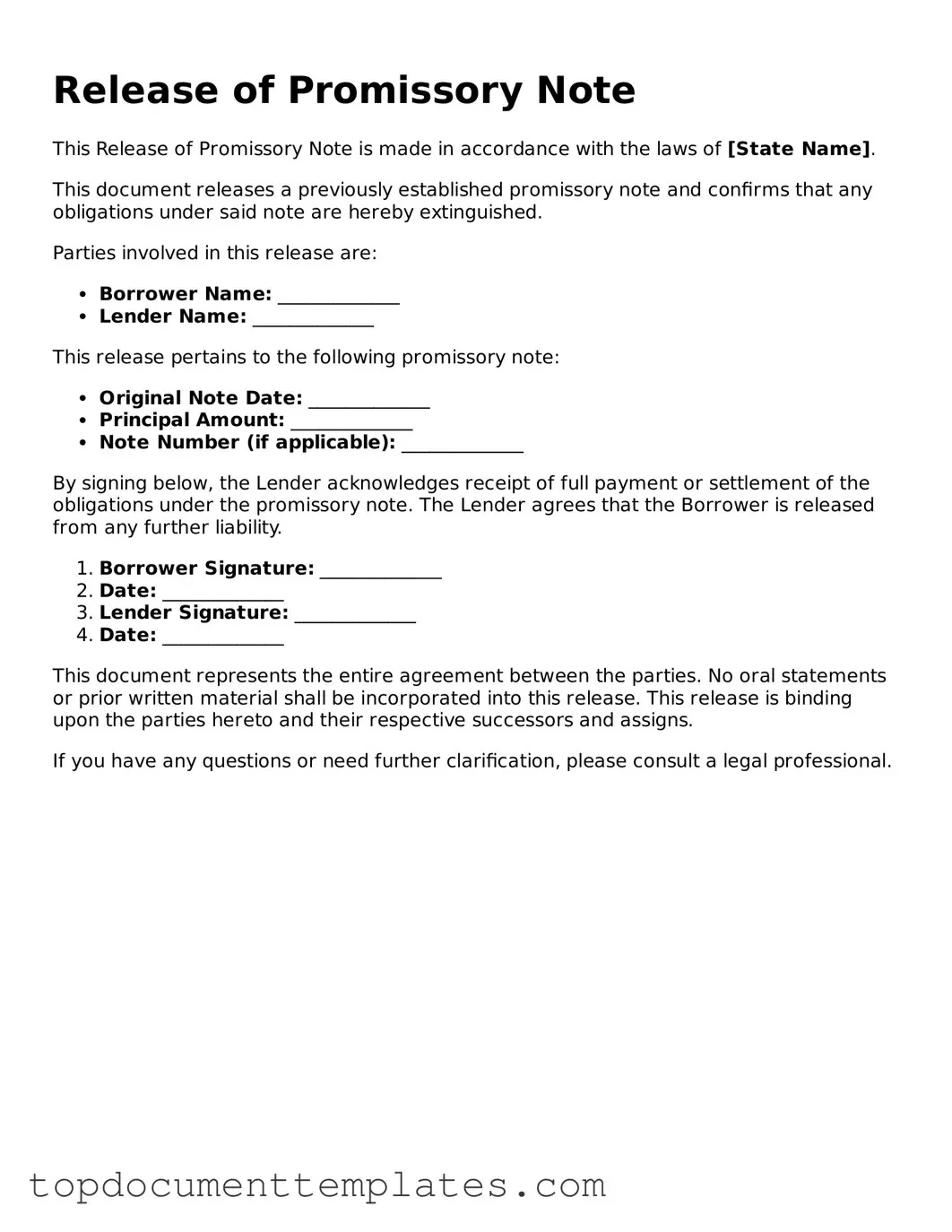Official Release of Promissory Note Template
A Release of Promissory Note form is a legal document that signifies the cancellation of a promissory note, thereby releasing the borrower from their obligation to repay the loan. This form is essential for both lenders and borrowers to ensure that all parties are clear about the discharge of the debt. If you need to complete this process, please fill out the form by clicking the button below.
Open This Form
